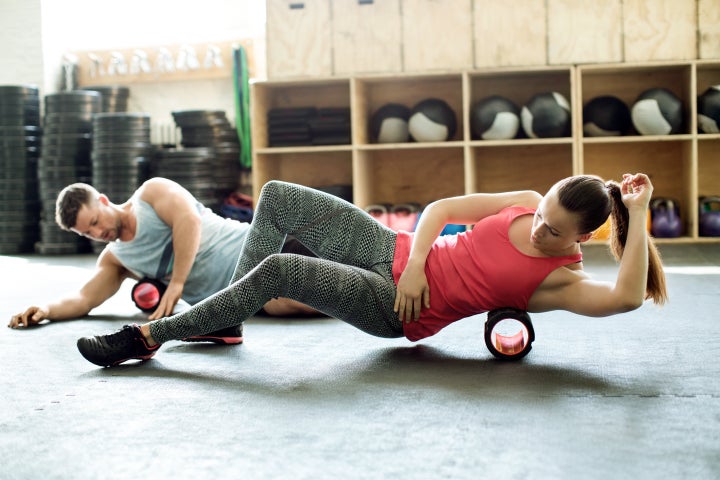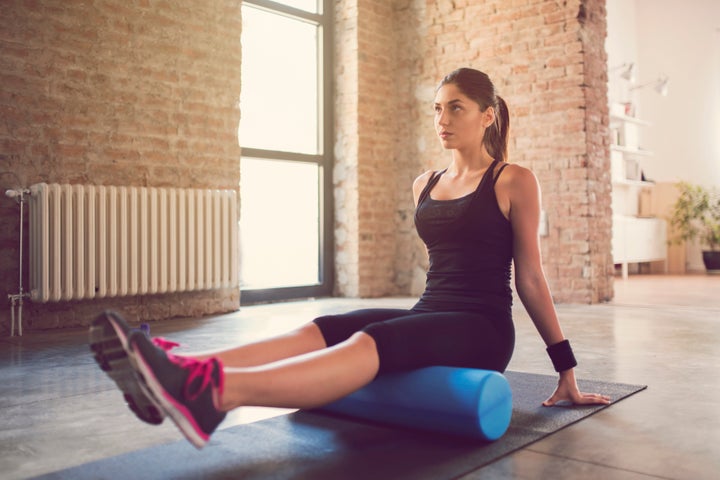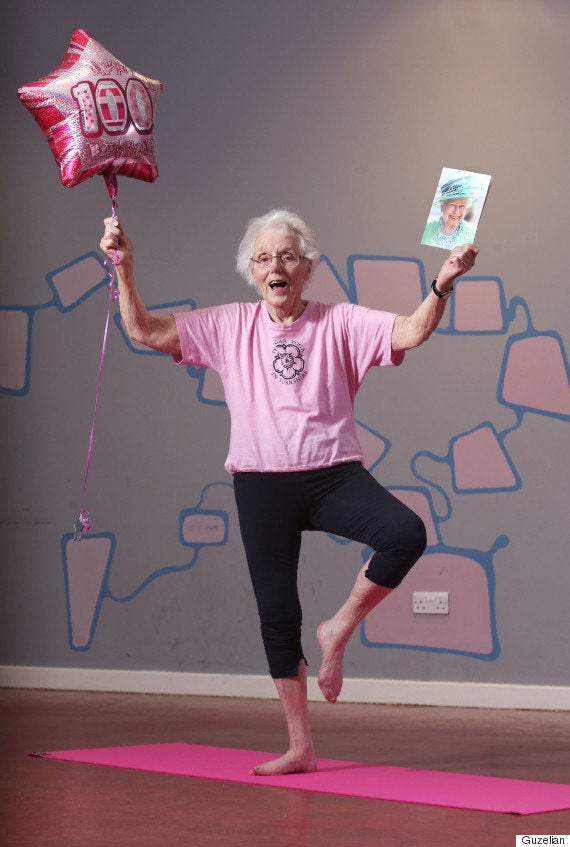
You’re reading Move, the nudge we need to get active, however makes us happiest and healthiest.
Chances are you’ve probably heard of a foam roller, you may have even grimaced as you use it to roll over your thighs after a workout, but are you using it effectively?
While they’re often thought of only to treat injury, the accessory can be used as a valuable part of any warm up or cool down.
The foam cylinders give you a deep tissue massage for the muscles that you work hard during strength and cardio exercises. The simple (and painfully satisfying) movement of rolling to and fro on the muscle is said to improve circulation and help soothe tight areas known as “trigger points”.
We spoke to Roger Kerry, physiotherapist and associate professor in Physiotherapy and Rehabilitation Sciences at the University of Nottingham to find out the research-backed benefits of foam rolling.
Why do people foam roll?
Prof Kerry said foam rollers have claimed to improve athletic performance, increase flexibility, reduce the effect of delayed onset muscle soreness (DOMS), reduce risk of injury, treat injury, and relieve pain.
However, scientifically-backed research proves that the two main benefits are increasing flexibility, as it can increase the range of movement in your joints, and reducing DOMS post-exercise.
Foam rolling can be used on many body parts, but is most commonly done on the large muscle groups in legs (quadriceps, hamstrings, calves) - this is why runners will often foam roll.
What is happening to our body when we foam roll?
“The idea is that the roller acts as a self-massage tool, so you can apply pressure and movement to a tense or sore area, just like a traditional masseur would,” explained Prof Kerry.
“It is all self-regulated so you can control the amount of force, and it is cheaper and more convenient that going for a massage.”
Manufactures claim the rollers are working on your “fascia” - the tough connective tissue which surrounds each muscles and organ in the body.
However, Prof Kerry said it is unlikely this is happening. He explained that research studies have shown foam rolling reduces arterial (blood vessel) stiffness, and influences vascular endothelial (cellular) function.
Why does it hurt?
If you already have painful, tense, or achy body parts, adding further pressure to those areas is obviously likely to hurt more.
While you foam roll, you’re likely to experience discomfort from the pressure, as there is a lot of force going on to your body.
“Pain induced when you are fit and well is not necessarily a good or bad thing, if it diminishes soon after rolling has stopped,” said Prof Kerry.

How often should we do it?
To see the benefits of foam rolling on your flexibility, Prof Kerry suggests doing between three to five bouts of 20-30 seconds, up to two bouts of one minute, or one bout of two minutes of rolling per day.
“Either way, around one to two minutes, per day is suggested,” Prof Kerry added.
“This should be guided by comfort as well, applying ‘moderate pressure’. There are no reasons that pain should be endured.”
How can we ensure we’re doing it properly?
“If you do think you should be foam rolling, then ensure you are safe and comfortable, preferably on a hard, flat surface with a soft mat,” said Prof Kerry.
“Ensure the roller is positioned on the intended body area, and that you are able to fully support your weight without relying on the roller itself. Then just repeatedly move your body or body part to and fro over the moving roller.”
Sports rehabilitation therapist James Dunne shared three common exercises that people who foam roll use:
1. Calf muscles.
2. Hamstrings.
3. Quads.
So, does all this mean I should definitely be foam rolling?
Despite the constant claims that foam rolling can prevent injury, Kerry said there are no scientific studies as of yet that back this up.
“Any of these effects witnessed by people who foam roll are likely to be psychologically-driven,” he added. “This is not necessarily a negative thing, many therapeutic interventions rely on such effects. Many of the witnessed effects could most likely be gained from other activities, such as optimising training and resting periods, and understanding principles of tissue loading and strength training.”
Fitness enthusiasts will foam roll different muscles for different reasons. If you are going to add foam rolling into your daily or weekly training, it’s best to visit a physiotherapist or speak to an expert to check the exercises you are doing.
Move celebrates exercise in all its forms, with accessible features encouraging you to add movement into your day – because it’s not just good for the body, but the mind, too. We get it: workouts can be a bit of a slog, but there are ways you can move more without dreading it. Whether you love hikes, bike rides, YouTube workouts or hula hoop routines, exercise should be something to enjoy.

She completed her first Ironman race - comprising of a 2.4-mile swim, 112-mile bike and 26.2-mile run - in 1985, aged 65.
At 75, she became the oldest woman to ever complete an Ironman triathlon and at 82, she set a world record as the oldest Ironman triathlon competitor.
She says faith, listening to her body and maintaining a positive attitude to her physical endurance have enabled her to succeed.

Speaking to HuffPost UK before the race she said: “The crowds are so wonderful, they really spur you on. I’m excited to be starting in the VIP section and spying some celebs!”
What a hero.

Afterwards he said he would've beaten his time if he hadn't missed a sign telling him he had 10 minutes left to cycle.
"Otherwise I would have gone faster, I would have posted a better time," he told Associated Press. "I'm not tired."

She has been bending and twisting her body almost every single week for the past three decades.
“I really enjoy doing yoga," she said. "It has really changed my life and has helped cure aches and pains.
"I use to have trouble from a slipped disc in my back but doing yoga really helped me cope with it.”

Colbert has been running track since her school days and despite falling on her first attempt, she smashed the previous record for 100-year-old runners (which was 1 minute 17 seconds) and crossed the finish line in 46.791 seconds.

The 97-year-old, who refers to retirement as "one of the worst things that you can do to yourself", said he got into fitness late on in life.
According to Today.com, he began serious weight training when he was 87 and didn't start running until he turned 95.
"By the time you get to 85 you may have lost about 50 percent of your muscle mass and power, so I think it's extremely important in your older age to do everything you can to build muscle," he added.